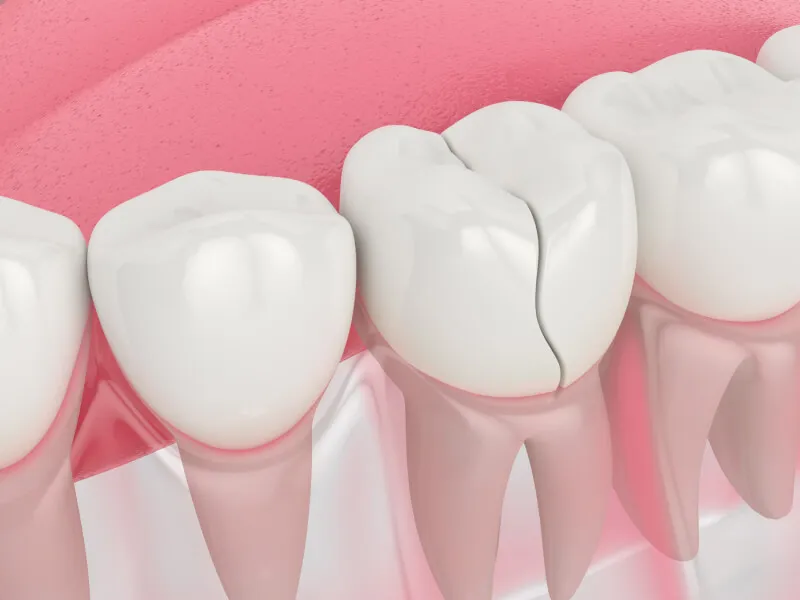
Can an Emergency Dentist Fix a Lost Filling or Crown? What You Need to Know
Losing a dental filling or crown can happen suddenly and without warning. You might be enjoying a meal, brushing your teeth, or even talking when you suddenly feel a gap or a rough edge in your mouth. One moment everything feels normal, and the next, your tooth feels strange or sensitive.
Although it may not cause pain immediately, losing a filling or crown leaves your tooth exposed and vulnerable. The protective barrier that shields the inner layers of the tooth is now gone, allowing bacteria, temperature changes, and pressure to reach sensitive areas. Even if you feel no discomfort at first, the exposed tooth structure can quickly develop decay or infection.
This brings us to the main question: Can an emergency dentist fix a lost filling or crown? The good news is that emergency dentists deal with such issues every day and can often repair or replace the restoration within a single visit. This article explores the entire process why restorations fall out, what happens when they do, what to do immediately, and how an emergency dentist restores your smile quickly and safely.
Understanding What Happens When a Filling or Crown Falls Out
Fillings and crowns are more than cosmetic solutions; they are protective restorations that keep your tooth healthy and functional. A filling seals a cavity or small damaged area, while a crown completely covers and strengthens a tooth that has been weakened, often after a large filling or root canal. Both protect the inner tooth particularly the dentin and pulp from bacteria, pressure, and temperature changes.
When a filling or crown comes loose, the exposed tooth is left unprotected. You may experience sensitivity to hot or cold foods, a sharp edge that irritates your tongue, or discomfort while chewing. The exposed surface allows bacteria to enter, increasing the risk of decay or infection.
The causes can range from normal wear to chewing something hard or sticky, or decay forming under the restoration. Even simple daily habits like teeth grinding can weaken the bond holding the restoration in place. Once the protection is lost, the tooth becomes fragile and must be treated promptly to prevent further damage.
Why Fillings and Crowns Fall Out: The Most Common Causes
Decay Beneath the Restoration
Decay beneath a filling or crown is the most common cause of it coming loose. When bacteria sneak through small gaps along the edge of a restoration, they erode the tooth underneath. The structure supporting the filling or crown weakens, eventually causing it to detach.
Chewing Hard or Sticky Foods
Eating hard or sticky foods puts significant stress on dental restorations. Hard nuts, candies, or ice can cause cracks or loosen the bonding. Sticky foods such as caramel, toffee, or chewing gum can pull on crowns or dental fillings until they dislodge completely.
Natural Wear and Tear Over Time
Even the best dental materials have a lifespan. Years of biting, chewing, brushing, and exposure to acidic foods gradually erode the bonding materials. Eventually, small gaps may form between the restoration and the tooth, allowing bacteria to enter and weakening the adhesion.
Old or Poorly Bonded Dental Work
As dental restorations age, they naturally lose strength. If your filling or crown is several years old, or if it was not bonded properly at the time of placement, it can become loose over time. This is especially common with restorations that were placed decades ago using older materials.
Teeth Grinding and Jaw Pressure
Bruxism, or teeth grinding, applies enormous pressure on both natural teeth and restorations. Over time, this pressure can loosen or fracture fillings and crowns. Wearing a night guard can prevent this kind of damage.
Is Losing a Filling or Crown a Dental Emergency?

While losing a filling or crown might not seem urgent at first, it is indeed considered a dental emergency. Even without severe pain, the exposed tooth is at immediate risk. The unprotected inner surface can quickly become sensitive, infected, or decayed.
When the underlying tooth pulp becomes inflamed or infected, the discomfort can escalate rapidly, potentially leading to more serious conditions that require root canal therapy or even extraction. Acting fast not only prevents pain but also helps preserve your natural tooth.
Emergency dentists specialize in handling such cases. They can examine, clean, and restore the tooth in one visit, preventing complications and saving you from more extensive and expensive treatment later.
What to Do Immediately After Losing a Filling or Crown
Recover and Store the Restoration
If your filling or crown falls out, try to locate it. Rinse it gently with water and keep it in a clean container. Do not use toothpaste or chemical cleaners. Sometimes, the dentist can re-cement the original crown if it’s still intact and fits well.
Keep the Area Clean
Gently rinse your mouth with warm salt water to remove food debris and bacteria. This helps prevent infection and soothes the gums around the exposed tooth. Avoid alcohol-based mouthwash, as it can cause irritation.
Protect the Tooth Temporarily
If the tooth feels sensitive, apply a small amount of temporary dental cement from a pharmacy. If you don’t have any, use sugar-free gum to cover the exposed area until you see your dentist. This creates a short-term barrier against air and food particles.
Avoid Chewing on the Affected Side
Chewing can worsen sensitivity or damage the exposed tooth. Stick to soft foods and chew on the opposite side until the tooth is restored.
Call an Emergency Dentist Immediately
Contact an emergency dentist as soon as possible. Describe your symptoms and explain whether you still have the crown or filling. Acting quickly increases the likelihood that your dentist can reattach it instead of replacing it entirely.
How an Emergency Dentist Fixes a Lost Filling or Crown

Examination and Cleaning
Your dentist will begin with a thorough examination to determine the cause of the problem. X-rays are often taken to check for decay, fractures, or damage beneath the restoration. Once the assessment is complete, the area is cleaned carefully to remove debris, old cement, or decay.
Evaluation of the Restoration
If you have the original crown with you, the dentist will examine it to see if it’s reusable. If it’s still intact and fits securely, it can often be re-cemented on the same day. If the crown is cracked or damaged, a new one will need to be made.
Replacing the Filling or Crown
If decay is present, it must be treated first. The dentist will remove the affected tissue, rebuild the missing structure if necessary, and then place a new filling or crown. For fillings, modern materials such as tooth-colored composite resin are commonly used.
If a new crown is needed, impressions or digital scans are taken to create one that fits perfectly. Many advanced dental clinics now offer same-day crown technology, allowing patients to receive a new restoration within a single appointment.
Pain Relief and Temporary Protection
If the tooth is sensitive, your dentist may apply numbing gel or local anesthesia. A temporary filling or crown might be placed if the final restoration cannot be completed immediately.
Aftercare and Follow-Up
Once the restoration is complete, your dentist will provide aftercare instructions to help you protect your repaired tooth. You’ll be advised on eating, brushing, and maintaining hygiene to extend the life of your new restoration.
Can the Same Crown or Filling Be Reused?
Whether the original restoration can be reused depends on its condition and the state of the tooth underneath. If the crown is undamaged, fits properly, and the tooth beneath is healthy, it can often be cleaned and re-cemented.
However, if the crown or filling is cracked, worn down, or no longer fits due to gum or bone changes, it must be replaced. The same applies if there is decay underneath, as placing the old crown back on top of decayed tooth structure could trap bacteria and lead to further damage.
Your dentist will make this decision after taking an X-ray and performing a clinical examination. Reusing an old restoration is possible, but only when it provides full protection and a secure fit.
How to Prevent Future Loss of Fillings or Crowns
Regular Dental Checkups
Routine dental visits are the best defense against restoration failure. During checkups, your dentist can identify early signs of wear, loosening, or decay before the restoration falls out completely.
Avoiding Hard or Sticky Foods
Try not to bite or chew extremely hard objects like ice, nuts, or hard candy. Sticky foods such as caramel or gummy candies can pull at restorations and weaken their hold.
Maintaining Good Oral Hygiene
Brush twice daily with fluoride toothpaste and floss carefully to clean around crowns and fillings. Keeping your gums and teeth healthy prevents decay that could undermine restorations.
Using a Night Guard for Teeth Grinding
If you grind your teeth while sleeping, a custom night guard can protect your fillings and crowns from excessive pressure, extending their lifespan significantly.
Addressing Problems Early
If you notice any changes, such as looseness, sensitivity, or a strange feeling when you bite, see your dentist immediately. Fixing small problems early prevents costly emergencies later.
Conclusion
A lost filling or crown might seem like a minor issue, but it can quickly lead to major dental problems if ignored. Even if the tooth doesn’t hurt right away, it’s exposed and vulnerable to decay, infection, and further damage.
An emergency dentist can fix a lost filling or crown efficiently, often in a single appointment. Whether by reattaching your existing crown or creating a new one, the dentist restores both the function and appearance of your tooth, relieving pain and protecting your oral health.
Prompt treatment not only saves your tooth but also prevents more extensive procedures down the road. If your filling or crown has fallen out, don’t wait for pain to set in contact an emergency dentist immediately. Acting quickly can make all the difference between a simple repair and a complex dental procedure later on.

